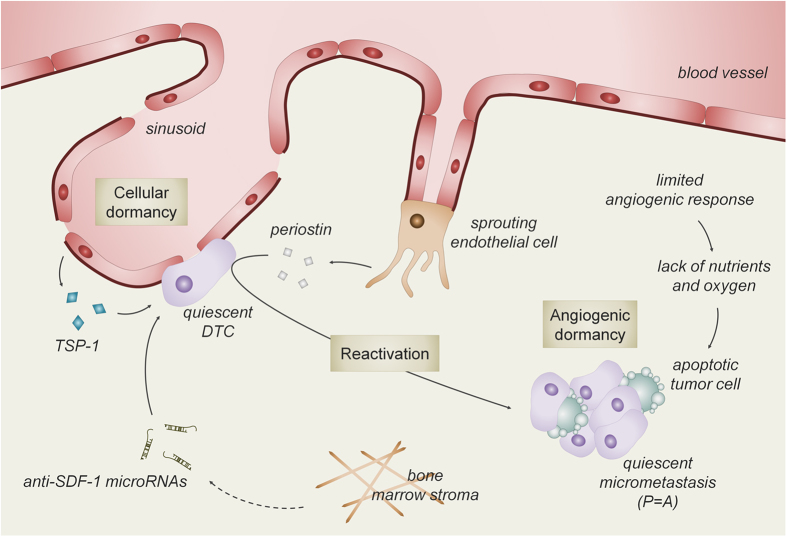Figure 2.
The bone marrow vasculature mediates tumor cell quiescence and reactivation. When disseminated tumor cells (DTCs) arrive in the bone marrow microenvironment they encounter an unreceptive environment, which hinders immediate overt tumor growth. DTCs survive in the hostile environment in close intimacy with the stable bone microvasculature which induces tumor cell cycle arrest, mediated by thrombospondin 1 (TSP-1) and anti-SDF-1 microRNA (that is, cellular dormancy). On the other hand, sprouting endothelial cells produce factors, like periostin, that drive the quiescent DTCs out of their dormant state and stimulate proliferation (P), resulting in a micrometastatic tumor. When micrometastases reach a certain size that cannot be further supported by the normal tissue vasculature, the supply of nutrients and oxygen will decrease, hereby inducing tumor cell apoptosis (A). Collectively, tumor cell apoptosis balances proliferation (P=A) and limits the development of an overt metastatic tumor.

